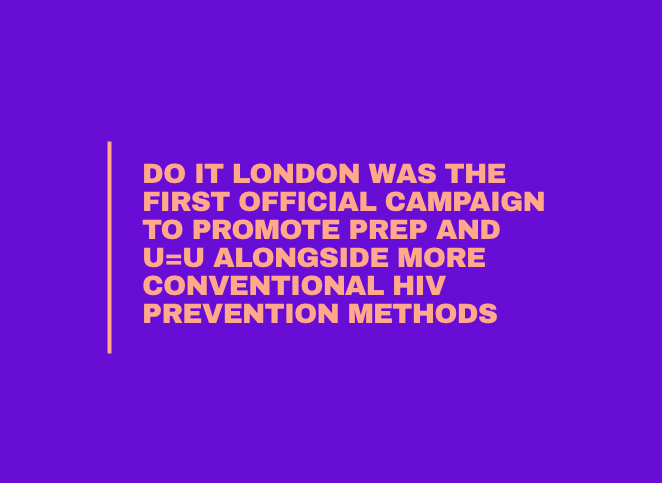Journey to Fast-Track Cities
London is the capital of the United Kingdom, and with over 8.7 million people, is the most populous city in Western Europe. In 2017, an estimated 38,600 people were living with HIV in London – almost 40 per cent of all those in the UK.
The overall HIV prevalence in the city is 0.57 per cent, reaching 13.4 per cent among gay, bisexual and other men who have sex with men (MSM). In 2017, of people newly diagnosed HIV positive, 63 per cent were among MSM and 33 per cent acquired HIV via heterosexual contact.
Recently, London has seen a significant fall in people newly diagnosed HIV positive, with a 22 per cent reduction in new infections among MSM between 2015 and 2016. However, this fall is neither uniform across all population groups nor in all areas of the city, and rates of late diagnosis, although showing improvement, remain stubbornly high at 35 per cent.
London’s outstanding HIV sector have collectively achieved amazing progress in the response to HIV, becoming the first city in the world to exceed the Joint United Nations Programme on HIV/AIDS (UNAIDS) targets of 90:90:90 and the more challenging ambitions of 95-95-95.
In 2017, prior to signing the Fast-Track Cities Initiative, figures were confirmed at 95-98-97: 95 per cent of Londoners living with HIV have been diagnosed, and of those 98 per cent were on treatment and 97 per cent were virally suppressed.
Nevertheless, HIV remains an important problem in London, with the infection impacting on Londoners more than any other part of the UK. On 10 January 2018 London Councils, NHS England, Public Health England and the Mayor of London, signed the Paris Declaration on Fast-Track Cities to end the HIV epidemic by 2030.
HIV prevalence in the city is 0.57% reaching 13.4% among gay, bisexual and men who have sex with men (MSM).
reduction in new infections among MSM between 2016 and 2017
By signing up to this initiative London are committed to:
- End new HIV infections by 2030
- End HIV-related stigma and discrimination
- Stop preventable deaths from HIV-related causes
- Work to improve the health, quality of life and well-being of people living with HIV across the capital
Intensifying the
city’s response
London’s experience illustrates the value of combination HIV prevention, bringing together biomedical, behavioural and structural interventions, focused on the communities most in need.
A supportive national and local policy context, exemplified by a national sexual health framework and local work through the London HIV Prevention Programme, alongside high-profile campaigns, high quality epidemiological data, the exceptional expertise of London’s clinical and voluntary sector services, and community activism, have all been the key drivers of change and crucial to the response.
HIV prevention was made the statutory responsibility of local government in 2013, and the London HIV Prevention Programme (LHPP) and local government decisions on HIV testing have been critically important in turning around the epidemic (which rose exponentially between 2005-13). In 2013, the LHPP represented a new strategic approach, with new investment and new prevention methods for London, including Do It London as the first large London-wide HIV campaign since the 1980s.
The Do It London campaign continues to make a significant contribution to raising awareness, tackling stigma, promoting combination prevention and contributing to London’s recent steep decline in new HIV infections.
The campaign was launched in 2015 and is jointly funded and delivered through a unique partnership of all London’s boroughs. The programme is based on partnership working and delivers sexual health promotion outreach to MSM and other high-risk communities, as well as a free condom distribution scheme across more than sixty gay venues in the capital.
Do It London was the first official campaign to promote PrEP and U=U alongside more conventional HIV prevention methods such as condom use and regular testing. Since the campaign began there has been an overall 37 per cent reduction in new HIV diagnoses (40 per cent among MSM) across the capital.
Increased HIV testing has been pivotal in the reduction in HIV transmission as it both reduces the number of people unaware they are living with HIV and opens the door to prevention initiatives for people who test HIV negative. In 2017, a total of 365,770 HIV tests were conducted in specialist NHS sexual health services in London, an increase of 5 per cent since 2013. This was supported by significant increases in HIV testing in complementary sites including community outreach, primary care, emergency departments and online self-sampling.
Rapid initiation of treatment for people who test HIV positive is another key element of London’s success as it has enabled people with HIV to become virally suppressed thereby reducing the time the person is infectious as well as maximising their own health. In 2017, 73 per cent of Londoners newly diagnosed with HIV started treatment within 91 days and a significant number started earlier, particularly at the steep-fall clinics – sometimes within 48 hours of diagnosis.
The fact that HIV testing and antiretroviral therapy are universally available without charge in the NHS is an important component in London’s success. However, even with the universal availability of first class treatment from the NHS, it took time to scale up each component – investing in HIV testing, prevention and treatment campaigns; scaling up testing; disseminating and embedding evidence-based treatment protocols; and working with patients on adherence and engagement with antiretroviral drugs – have all been necessary to maximise the uptake of universal services.
Today, the newest tool in the HIV prevention toolkit, Pre-Exposure Prophylaxis (PrEP) is currently only available without charge via clinical trials in England, although a substantial number of people, predominantly MSM, have been able to access PrEP via online pharmacies. The increase in PrEP use in 2016 and 2017 is likely to have contributed to the observed reduction in HIV incidence.
London’s vibrant, diverse and engaged voluntary and community sector has been another key element of the fight against HIV since the beginning of the epidemic – as partners in prevention, patient care, social and peer support and wider reproductive and sexual health programmes.
Local community-based organisations have been critical partners in expanding HIV awareness, tackling HIV stigma and scaling up prevention initiatives including HIV testing and links to care. They have been drivers of innovation with support from regional and national funding, despite considerable pressure, as wider funding support has reduced, commissioning arrangements transformed, and the needs of people living with and at risk of HIV have evolved. Nevertheless, their knowledge of and acceptance by communities, relative cost-effectiveness, and proactive engagement continue to position the voluntary and community sector as owners and advocates for community activism, engagement and programme delivery.
Today HIV care and prevention in the community is evolving from disease and risk group specific programmes towards a more integrated approach that includes primary care, multi-condition approaches and collaborative partnerships, focused on HIV and its wider determinants.
In January 2018 the Mayor of London, Sadiq Kahn, together with London Councils, Public Health England and NHS England signed London up to the Fast-Track Cities Initiative. To date, the successes we have seen in London have been the collective efforts of local government, the NHS and clinicians, the HIV voluntary and community sector and people living with HIV. However, as London gets nearer to achieving elimination, there will be many challenges ahead.
In this next phase, the value of the Fast-Track Cities initiative is in bringing all key stakeholders involved in London’s HIV response together for the first time, creating a shared forum and articulating a common purpose that will enable collaboration and partnership working to accelerate London in ‘Getting to Zero’.

Since the campaign began there has been an overall 37% reduction in new HIV diagnoses
In 2017, a total of 365,770 HIV tests were conducted
73% of Londoners newly diagnosed with HIV started treatment within 91 days
The increase in PrEP use in 2016 and 2017 is likely to have contributed to the observed reduction in HIV incidence.

Challenges
ahead
Despite remarkable progress, HIV remains a significant clinical and public health problem in London. The 5 per cent who remain unaware of their HIV status in the city include many different groups that may be disproportionately hard to engage.
As the prevalence of undiagnosed HIV infection falls, late diagnosis will become more challenging and new approaches and tools will be required. In London, late diagnosis has a disproportionately high impact on older people, heterosexuals and people from diverse ethnic backgrounds, which will require more tailored approaches to community engagement, testing and care.
Persistently high levels of HIV-related stigma and discrimination are a major obstacle to overcoming HIV in London. A 2017 survey of Londoners living with HIV showed that 14 per cent had not told anyone, other than healthcare professionals, about their HIV status; 8 per cent reported avoiding seeking healthcare when they needed it in the past year; and 4 per cent said they had been refused healthcare or delayed a treatment or medical procedure in the past year.
A recent YouGov survey, commissioned by the Terence Higgins Trust, highlighted the very low levels of awareness of U=U, even among lesbian, gay and bisexual respondents who said they would avoid sexual contact with someone living with HIV who was virally supressed. Concerns about HIV stigma within the NHS have also been identified as a continuing challenge by those living with HIV and more work will need to be done across primary, secondary and specialist services to tackle this problem.
Fast-tracking ‘Getting to Zero’
Since signing the Paris declaration, London has convened a Fast-Track Cities Leadership Group with senior representatives from the city’s four accountable health and care bodies, people living with HIV, clinicians, and community-based organisations.
London is fortunate to have a city-wide transformation and delivery unit called Healthy London Partnership, which convenes partners across the health and care system to deliver transformation with the ultimate goal of making London the world’s healthiest city. Healthy London Partnership is the delivery partner for Fast-Track Cities London and is providing transformation expertise and programme management of the initiative on behalf of the Fast-Track Cities London Leadership group.
The Leadership Group has identified key priority areas for action based on key stakeholder engagement and an asset and gap analysis. These priority areas are captured in the London Fast-Track Cities Roadmap to zero, which aims to focus coordinated activities in four areas: systems leadership; advocacy; collaborative delivery; and communications and engagement. This strategic plan will ensure the London Fast-Track Cities initiative is aligned with wider strategic plans such as the Mayor’s Health Inequalities Strategy, and long-term plans of local government and the NHS.
To support the delivery of the Fast-Track Cities roadmap, NHS England (London) have made a financial investment totalling £6 million over a three-year period, enabling the development of a major work programme. Industry partners have also pledged their financial support for London’s work.
In summary, there is much to learn and celebrate from London’s HIV journey, yet there is much more to do, together.
areas for action:
- systems leadership
- advocacy
- collaborative delivery
- communications &
engagement
NHS England (London) have made a financial investment totalling £6 million over a three-year period

